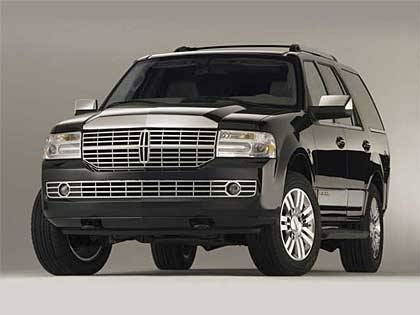
The SUV, or sport utility vehicle, is a truck-based station wagon that is equipped with either two-wheel or four-wheel drive. The SUV features passenger car qualities such as bucket seats, console, thick carpeting and even optional DVD players in the rear passenger area. The SUV is built on a light-duty pickup truck chassis for versatility and durability on and off the road.
The SUV can trace its roots to the debut of General Motors' Chevrolet Suburban in 1935 and its sister, the GMC Carryall. The Suburban and Carryall were truck-based station wagons designed to carry up to eight passengers. These early SUVs were designed in part to transport forest workers and members of the Civilian Conservation Corps to remote areas.

The first postwar SUV was the 1946-65 Willys Jeep wagon. The Willys wagon was designed and produced specifically as a family station wagon. The Willys was offered in two- and four-door models and sat on a 104.5-inch wheelbase. It was replaced by the Jeep Wagoneer.

Two years after the debut of the Willys Jeep wagon, the Land Rover began production in England. It possessed all the characteristics of the Jeep's rugged construction and was equipped with four-wheel drive. The difference between the two was that the Land Rover was designed first as an all-terrain vehicle. Comfort came in a distant second.

The modern concept of the SUV began evolving in the 1960s with the growing popularity of the Wagoneer. The Wagoneer, which served as a template for all future SUVs, was the first luxury 4x4 family car with numerous interior passenger car appointments. Rural families favored it for its ability to navigate unpaved roads and rugged terrain while keeping passengers comfortable. The Wagoneer was given considerable power with a range of V-8 engines.

The Jeep Wagoneer combined the traditional appointments of a station wagon with the ruggedness of the Land Rover. And Jeep wanted the public to know it. Jeep pioneered the marketing of the SUV by telling suburban families that its rugged wagon fit all family needs. It was a marketing technique mimicked later by Ford for its Explorer SUV.

In the 1970s, the SUV field was crowded. The Jeep and Land Rover were the leaders. Followers included the International Travelall, the International Scout, the Ford Bronco, the Chevrolet Blazer, the GMC Jimmy, Toyota Land Cruiser and the Range Rover.

By the 1980s, pickup trucks had long been the second family car, but were not practical family vehicles. The SUV was the answer as a minivan and station wagon replacement with truck qualities. The SUV provided all the benefits of a masculine, large and tough vehicle with the amenities of a luxury car. By 2004, more than 4.5 million SUVs were on the road. But as gasoline prices began to climb in the mid-2000s, SUVs fell out of favor. The more economical crossover vehicle, based on a passenger-car chassis, became popular for its SUV looks, all-wheel drive, smoother ride and high-ground clearance.
